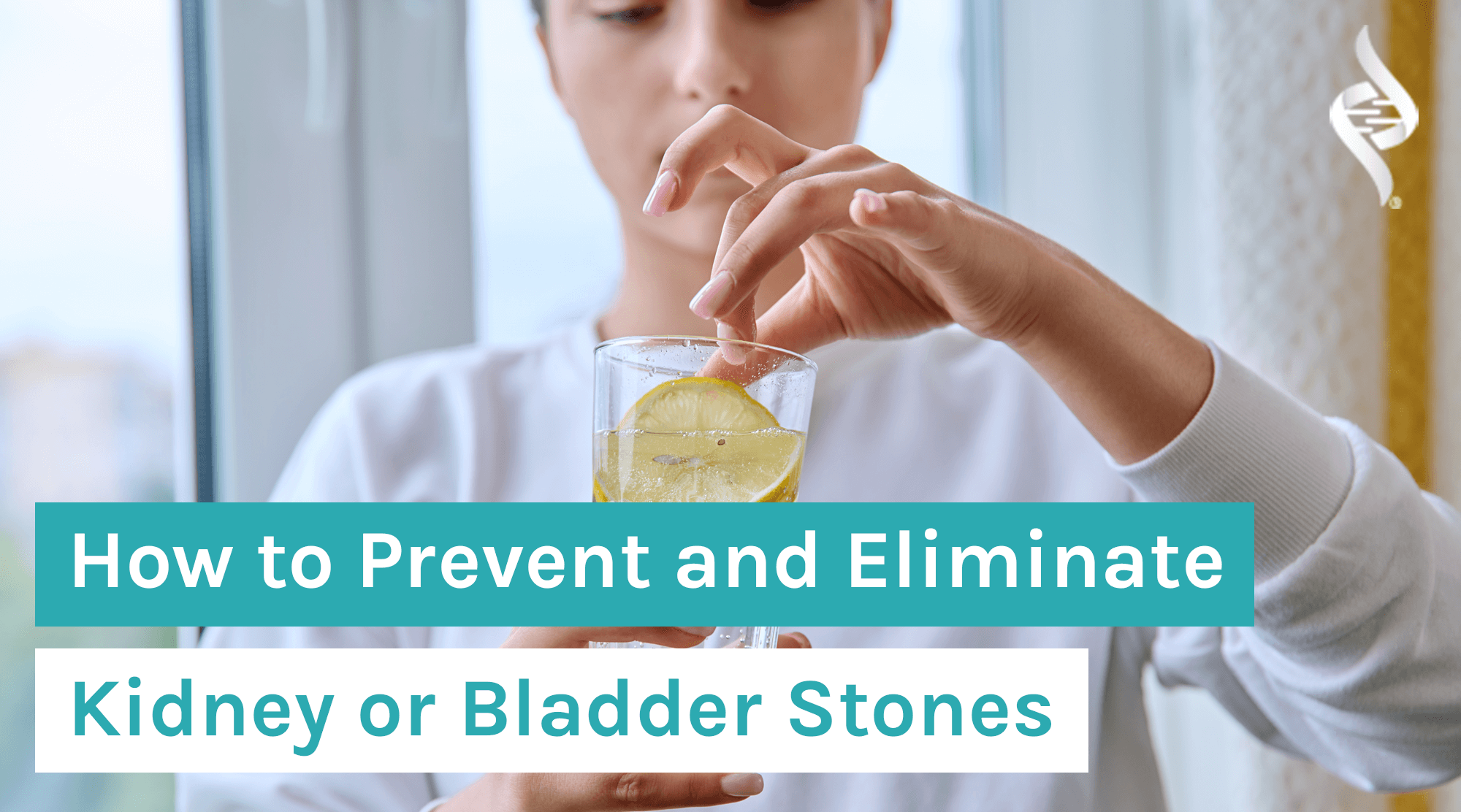How to Prevent and Eliminate Kidney or Bladder Stones
Video Transcript:
Today’s question comes from John P. in Australia. John says, “Why can I not dissolve my kidney stones stuck in my bladder?“ He says, “I’d like to have more instruction on how to dissolve a bladder stone.“
This is a really wonderful question, John. Specifically with stones in a transitional state, meaning they are transitioning out of the kidneys and hopefully out of your body, a bladder stone is technically a kidney stone that is now released from the kidney and in the bladder.
What we find is that the assorted types of stones[1] are going to be a factor in terms of how easily you’re able to dissolve, get rid of, or eliminate the stone.
Four Common Kidney Stone Types
Let me tell you about four common kidney stone types.
There are calcium oxalate stones. These are the most common, and they tend to be, true to the name, calcium-oriented. It’s excess calcium that is accumulated and is forming a stone, a boney stone.
There are uric acid-oriented stones. There are cystine stones, and then there are struvite stones. That is the broad scope.
Now, within calcium oxalate stones, we also will see a small percentage of calcium phosphate stones, but when we’re dealing with the most common stones, there are an assortment of reasons why your body might be manufacturing them.
Assess Your Diet & Hydration
Generally, what I recommend for patients is to assess their diet. Let’s look at what are you eating that might be either calcium dense, or that might be causing this type of buildup of either uric acid stones or calcium oxalate stones.
Diet is a really big factor, as well as assessing whether you’re dehydrated or not.
Hydration levels are really, really critical for helping minimize the stone formation and help the kidneys’ flushing.
Magnesium Deficiency is a Common Culprit
Now, here are some things that we can help you out with here at Organixx. Magnesium 7, and I’ve posted a recent YouTube video on my channel about magnesium and the role with kidney stones.
If you are dealing with a calcium oxalate stone, magnesium is going to be really critical in blocking that calcium buildup. It’s really important if you are not taking a very well-rounded, full-spectrum magnesium, like Magnesium 7, this would be something to add to your diet. If you’re looking at preventive resources or treatments to prevent kidney stones, you want to make sure you’re optimizing your magnesium levels.
Analyze the Stones & Your Element Deficiencies
Some of my patients that have repetitive, recurrent stones, we, one, test the sample of the stone. We need to figure out what type of stone it is. Then, two, we’ll actually do an essential element, and this is a test that I have here in my clinic, where you can actually test to see how much magnesium you have in your body, and are you deficient.
If you are deficient, then adding Magnesium 7 will help, but we need to know how deficient. Sometimes I have patients on double, triple, quadruple dosing because of the degree of deficiency in magnesium. Adding magnesium is critical, especially when you’re dealing with calcium oxalate stones.
Dr. Melissa’s Stone-Breaker Protocol
Then, my last and final recommendation is an amazing protocol that I’ve developed for a lot of my patients. It involves an herb, and it’s called stone breaker, or chanca piedra, and drinking lemon juice water in the morning.
Those two – in combination with the diet change, magnesium, and making sure you’re hydrating – can greatly benefit the reduction in stones, the reduction in size, and then aid in the successful passing of those stones.
John, I hope that was helpful. Let us know how it works for you. For any of you who might have any additional kidney health-related questions, feel free to send them our way and I’ll answer them here in video.




Comments